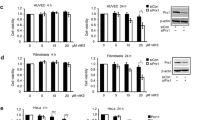Abstract
The flavoprotein DT-diaphorase (NAD(P)H: quinone oxidoreductase, EC 1.6.99.2) is an enzyme which has been described as catalyzing the two-electron reduction of quinoid compounds to their representative hydro-quinone forms.1 The enzymatic reduction of quinones to their respective hydroquinones may represent part of the cellular defense mechanism against quinone-induced toxicity, because fully reduced quinones are capable of being conjugated by sulfate, sugars and amino acids and subsequently excreted.2 Both chemically and in biological systems, however, it is easier to reduce quinones by one electron to their semiquinones than by two electrons to their hydroquinone forms. The formation of these semiquinone radicals can lead to alkylation reactions and/or reactions with molecular oxygen to form oxygen radicals, resulting in oxidative stress and quinone toxicity. This mechanism of toxicity has been suggested to be responsible for at least part of the mechanism of antineoplastic activity for some of the quinoid anticancer drugs such as Adriamycin (Adr) and mitomycin C (MMC).3,4 Because DT-diaphorase reduces quinones by two electrons and thereby circumvents the potentially toxic one-electron reduction reactions of these compounds, it is possible that tumor response to treatment by these compounds may be greatly influenced by the endogeneous DT-diaphorase activity in the tumors.
Access this chapter
Tax calculation will be finalised at checkout
Purchases are for personal use only
Preview
Unable to display preview. Download preview PDF.
Similar content being viewed by others
References
L. Ernster, in: “Methods in Enzymology,” vol. 10, R.W. Estabrook and M.E. Pullman, eds., Academic Press, New York (1967).
C. Lind, H. Vadi, and L. Ernster, Metabolism of benzo (a) pyrene-3,6-quinone and 3-hydroxybenzo (a) pyrene in liver microsomes from 3-methylchoIanthrene-treated rats, Arch. Biochem. Biophys. 190:97 (1978).
N.R. Bachur, S.L. Gordon, M.V. Gee, and H. Kon, NADPH-cytochrome P-450 reductase activiation of quinone anticancer agents to free radicals, Proc. Natl. Acad. Sci. USA 76:954 (1979).
C.A. Pritsos and A.C. Sartorelli, Generation of reactive oxygen radicals through bioactivation of mitomycin antibiotics, Cancer Res. 46:3528 (1986).
L.L. Pardini, L.M. Aaronson, P.L. Hering, and R.S. Pardini, Heterotransplantation of equine carcinoma cells in a thymic (nude) mice, Am. J. Vet. Res. 47:610 (1986).
L.M. Aaronson, L.L. Pardini, and R.S. Pardini, Heterotransplantation of canine sarcoma cells (Blu 284) in a thymic (nude) mice, Am. J. Vet. Res. 48:816 (1987).
Author information
Authors and Affiliations
Editor information
Editors and Affiliations
Rights and permissions
Copyright information
© 1988 Plenum Press, New York
About this chapter
Cite this chapter
Pritsos, C.A., Pardini, L.L., Elliott, A.J., Pardini, R.S. (1988). Relationship Between the Antioxidant Enzyme DT-Diaphorase and Tumor Response to Mitomycin C Treatment. In: Simic, M.G., Taylor, K.A., Ward, J.F., von Sonntag, C. (eds) Oxygen Radicals in Biology and Medicine. Basic Life Sciences, vol 49. Springer, Boston, MA. https://doi.org/10.1007/978-1-4684-5568-7_113
Download citation
DOI: https://doi.org/10.1007/978-1-4684-5568-7_113
Publisher Name: Springer, Boston, MA
Print ISBN: 978-1-4684-5570-0
Online ISBN: 978-1-4684-5568-7
eBook Packages: Springer Book Archive



